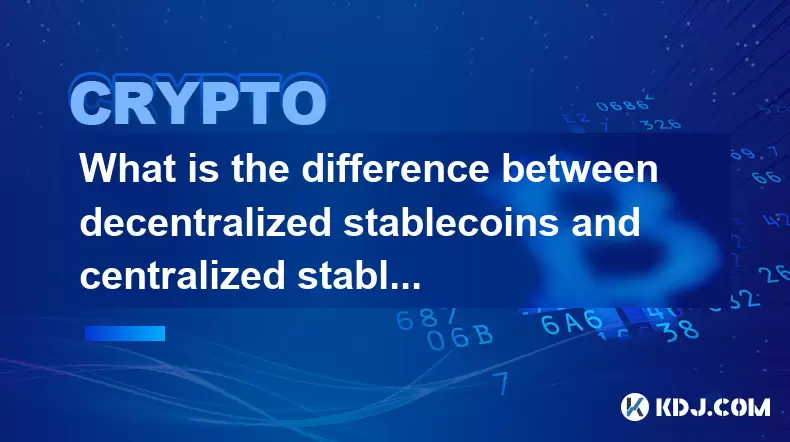-
 Bitcoin
Bitcoin $99,594.2189
-3.59% -
 Ethereum
Ethereum $2,188.5793
-9.00% -
 Tether USDt
Tether USDt $1.0001
-0.02% -
 XRP
XRP $1.9745
-5.82% -
 BNB
BNB $608.9511
-3.73% -
 Solana
Solana $130.4575
-5.93% -
 USDC
USDC $1.0000
0.01% -
 TRON
TRON $0.2637
-3.59% -
 Dogecoin
Dogecoin $0.1493
-5.97% -
 Cardano
Cardano $0.5322
-6.72% -
 Hyperliquid
Hyperliquid $33.9044
3.33% -
 Bitcoin Cash
Bitcoin Cash $449.6411
-5.46% -
 UNUS SED LEO
UNUS SED LEO $8.9629
0.43% -
 Sui
Sui $2.3943
-8.35% -
 Chainlink
Chainlink $11.4402
-7.83% -
 Stellar
Stellar $0.2241
-6.49% -
 Avalanche
Avalanche $16.1489
-4.24% -
 Toncoin
Toncoin $2.7182
-5.94% -
 Shiba Inu
Shiba Inu $0.0...01040
-5.72% -
 Litecoin
Litecoin $78.7882
-4.07% -
 Ethena USDe
Ethena USDe $1.0004
-0.01% -
 Hedera
Hedera $0.1305
-7.45% -
 Monero
Monero $297.0030
-5.32% -
 Dai
Dai $0.9997
-0.02% -
 Polkadot
Polkadot $3.1834
-6.03% -
 Bitget Token
Bitget Token $3.9788
-7.03% -
 Uniswap
Uniswap $6.1327
-10.62% -
 Pepe
Pepe $0.0...08689
-8.30% -
 Pi
Pi $0.4826
-9.65% -
 Aave
Aave $219.8043
-9.69%
Will stablecoins be affected by inflation? How is their anti-inflation ability?
Stablecoins, designed to minimize volatility, can be affected by inflation, with their resistance varying by type: fiat-collateralized, crypto-collateralized, and algorithmic.
May 19, 2025 at 08:14 am

Stablecoins have become an integral part of the cryptocurrency ecosystem, offering a less volatile alternative to traditional cryptocurrencies like Bitcoin and Ethereum. Given their design to maintain a stable value, often pegged to fiat currencies such as the US dollar, a pertinent question arises: Will stablecoins be affected by inflation? How is their anti-inflation ability? This article delves into the mechanics of stablecoins, their relationship with inflation, and how they manage to resist inflationary pressures.
Understanding Stablecoins and Their Types
Stablecoins are cryptocurrencies designed to minimize the volatility typically associated with other digital assets. They achieve this stability through various mechanisms, categorized into three main types:
- Fiat-collateralized stablecoins are backed by reserves of a fiat currency, such as the US dollar. Examples include Tether (USDT) and USD Coin (USDC). The value of these stablecoins is pegged to the fiat currency they hold in reserve.
- Crypto-collateralized stablecoins are backed by other cryptocurrencies. For instance, DAI is backed by Ethereum. These stablecoins use smart contracts to maintain their peg to a target value, often the US dollar.
- Algorithmic stablecoins use algorithms to control the supply of the stablecoin in response to changes in demand, aiming to maintain a stable value without any collateral. An example is TerraUSD (UST), which adjusts its supply based on market conditions.
The Impact of Inflation on Stablecoins
Inflation, the rate at which the general level of prices for goods and services rises, can affect the value of fiat currencies. Since many stablecoins are pegged to fiat currencies, they can be indirectly influenced by inflation. However, the extent to which stablecoins are affected varies based on their type.
- Fiat-collateralized stablecoins are directly linked to the value of the fiat currency they are pegged to. If the US dollar experiences inflation, the value of USDT or USDC would theoretically remain stable in terms of the dollar but could lose purchasing power in the real world. This means that while the stablecoin's value in dollars remains constant, the goods and services it can buy may decrease.
- Crypto-collateralized stablecoins are less directly affected by fiat currency inflation since their value is tied to other cryptocurrencies. However, if the cryptocurrencies used as collateral are influenced by broader economic factors, including inflation, the stablecoin's stability could be compromised.
- Algorithmic stablecoins aim to maintain their peg through algorithmic adjustments rather than collateral. These stablecoins are theoretically less susceptible to fiat currency inflation because their value is determined by supply and demand dynamics rather than a direct link to a fiat currency. However, their ability to resist inflation depends on the effectiveness of their algorithms and the stability of the broader cryptocurrency market.
Anti-Inflation Mechanisms in Stablecoins
Stablecoins employ various strategies to mitigate the effects of inflation and maintain their value:
- Reserve Management: Fiat-collateralized stablecoins like USDT and USDC maintain reserves that are managed to ensure they can meet redemption requests at the pegged value. These reserves may include interest-bearing assets that can offset some inflationary pressures.
- Over-collateralization: Crypto-collateralized stablecoins often require over-collateralization to ensure that the value of the collateral exceeds the value of the stablecoin. This buffer can help maintain the peg even if the collateral's value fluctuates.
- Algorithmic Adjustments: Algorithmic stablecoins use algorithms to adjust their supply in response to market demand. If the stablecoin's value begins to deviate from its peg due to inflation or other factors, the algorithm can increase or decrease the supply to restore stability.
Case Studies: How Stablecoins Have Handled Inflation
Examining real-world examples can provide insight into how stablecoins have managed inflationary pressures:
- Tether (USDT): As a fiat-collateralized stablecoin, USDT has maintained its peg to the US dollar even during periods of high inflation. However, its ability to preserve purchasing power depends on the stability of the US dollar itself.
- DAI: As a crypto-collateralized stablecoin, DAI has faced challenges during volatile periods in the cryptocurrency market. However, its over-collateralization and the stability mechanisms built into its smart contracts have generally helped it maintain its peg.
- TerraUSD (UST): As an algorithmic stablecoin, UST has experienced periods of instability, particularly when the broader cryptocurrency market is volatile. Its ability to resist inflation is contingent on the effectiveness of its algorithmic adjustments.
The Role of Stablecoin Issuers in Managing Inflation
Stablecoin issuers play a crucial role in managing the impact of inflation on their tokens. Their strategies include:
- Regular Audits: Issuers of fiat-collateralized stablecoins conduct regular audits to ensure that their reserves are sufficient to back the circulating supply of their stablecoins. These audits help maintain trust and stability.
- Interest-Bearing Reserves: Some stablecoin issuers invest their reserves in interest-bearing assets to generate returns that can help offset inflationary pressures.
- Collateral Diversification: Crypto-collateralized stablecoins often diversify their collateral to reduce the risk of volatility in any single asset affecting their stability.
- Algorithmic Refinement: Issuers of algorithmic stablecoins continuously refine their algorithms to improve their responsiveness to market conditions and maintain stability.
Frequently Asked Questions
Q: Can stablecoins completely eliminate the risk of inflation?
A: No, stablecoins cannot completely eliminate the risk of inflation. While they are designed to maintain a stable value, their effectiveness depends on their type and the mechanisms they use to resist inflationary pressures. Fiat-collateralized stablecoins are particularly vulnerable to the inflation of the currencies they are pegged to.
Q: Are algorithmic stablecoins more effective at resisting inflation than collateralized stablecoins?
A: It depends on the specific implementation and market conditions. Algorithmic stablecoins aim to adjust their supply to maintain a stable value, which can be effective in certain scenarios. However, they can also be more vulnerable to market volatility and may not always maintain their peg as effectively as collateralized stablecoins.
Q: How do stablecoins compare to traditional savings accounts in terms of inflation protection?
A: Stablecoins generally offer less protection against inflation compared to traditional savings accounts that may offer interest rates. While stablecoins aim to maintain a stable value, they do not typically generate returns that can offset inflation. Savings accounts, on the other hand, can provide interest that helps preserve purchasing power, although the rates may not always keep up with inflation.
Q: Can the value of a stablecoin ever deviate from its peg due to inflation?
A: Yes, the value of a stablecoin can deviate from its peg due to inflation, particularly if the stablecoin is fiat-collateralized and the fiat currency it is pegged to experiences significant inflation. Additionally, market dynamics and the effectiveness of the stablecoin's stabilization mechanisms can also cause deviations from the peg.
Disclaimer:info@kdj.com
The information provided is not trading advice. kdj.com does not assume any responsibility for any investments made based on the information provided in this article. Cryptocurrencies are highly volatile and it is highly recommended that you invest with caution after thorough research!
If you believe that the content used on this website infringes your copyright, please contact us immediately (info@kdj.com) and we will delete it promptly.
- BTC, Iran Strike, and Markets: Navigating Geopolitical Tensions
- 2025-06-23 10:25:12
- MAGACOIN, Ethereum, Avalanche: A New Wave or Legacy Chains?
- 2025-06-23 10:25:12
- BlockDAG, Crypto Coins, and Leading Trends: What's Hot in 2025?
- 2025-06-23 10:45:12
- PEPE Exit, SUI Calls, and BlockDAG Coin: What's the Smart Money Doing?
- 2025-06-23 10:45:12
- Grant Cardone, Bitcoin, and Expansion: A New York State of Mind
- 2025-06-23 11:05:11
- BTC, $99K, Chaos: A Crypto Market Rollercoaster
- 2025-06-23 11:25:12
Related knowledge

What is the difference between decentralized stablecoins and centralized stablecoins? Pros and cons comparison
Jun 15,2025 at 09:42am
What Are Stablecoins and Why Do They Matter?Stablecoins are a category of cryptocurrencies designed to maintain a stable value, usually pegged to an external asset such as the U.S. dollar, gold, or even other fiat currencies. Their primary purpose is to reduce the volatility typically associated with cryptocurrencies like Bitcoin or Ethereum. This stabi...

What is the role of stablecoins in DeFi? Advantages and limitations analysis
Jun 14,2025 at 06:28am
Understanding Stablecoins in the DeFi EcosystemStablecoins play a pivotal role in the decentralized finance (DeFi) landscape by providing a bridge between volatile cryptocurrencies and traditional fiat currencies. Unlike Bitcoin or Ethereum, stablecoins are designed to maintain a consistent value, typically pegged to assets like the US Dollar or gold. T...

How do algorithmic stablecoins work? Potential risks and market impact
Jun 12,2025 at 02:07pm
Understanding Algorithmic StablecoinsAlgorithmic stablecoins are a type of cryptocurrency designed to maintain a stable value relative to a specific asset, usually the US dollar. Unlike traditional stablecoins like Tether (USDT) or USD Coin (USDC), which are backed by reserves such as cash or short-term bonds, algorithmic stablecoins rely on smart contr...

How do stablecoins anchor legal currencies? Technical and economic model analysis
Jun 16,2025 at 08:43am
Understanding the Concept of StablecoinsStablecoins are a category of cryptocurrencies designed to maintain a stable value relative to a specific asset, most commonly fiat currencies like the U.S. dollar or Euro. Unlike volatile cryptocurrencies such as Bitcoin and Ethereum, stablecoins aim to provide price stability by anchoring their value to an exter...

How do stablecoins maintain price stability? Principles and risk analysis
Jun 11,2025 at 12:01am
Understanding the Mechanisms Behind Stablecoin StabilityStablecoins are a category of cryptocurrencies designed to minimize price volatility, often pegging their value to a fiat currency such as the US dollar. The core principle behind stablecoins is to offer the benefits of blockchain technology—like fast and decentralized transactions—while maintainin...

What is the operating mechanism of stablecoins? In-depth exploration of its stability principle
Jun 10,2025 at 09:28pm
Understanding the Core Concept of StablecoinsStablecoins are a unique category within the cryptocurrency market, designed to address one of the most significant drawbacks of traditional cryptocurrencies: price volatility. Unlike Bitcoin or Ethereum, which can experience dramatic price swings in short periods, stablecoins aim to maintain a stable value r...

What is the difference between decentralized stablecoins and centralized stablecoins? Pros and cons comparison
Jun 15,2025 at 09:42am
What Are Stablecoins and Why Do They Matter?Stablecoins are a category of cryptocurrencies designed to maintain a stable value, usually pegged to an external asset such as the U.S. dollar, gold, or even other fiat currencies. Their primary purpose is to reduce the volatility typically associated with cryptocurrencies like Bitcoin or Ethereum. This stabi...

What is the role of stablecoins in DeFi? Advantages and limitations analysis
Jun 14,2025 at 06:28am
Understanding Stablecoins in the DeFi EcosystemStablecoins play a pivotal role in the decentralized finance (DeFi) landscape by providing a bridge between volatile cryptocurrencies and traditional fiat currencies. Unlike Bitcoin or Ethereum, stablecoins are designed to maintain a consistent value, typically pegged to assets like the US Dollar or gold. T...

How do algorithmic stablecoins work? Potential risks and market impact
Jun 12,2025 at 02:07pm
Understanding Algorithmic StablecoinsAlgorithmic stablecoins are a type of cryptocurrency designed to maintain a stable value relative to a specific asset, usually the US dollar. Unlike traditional stablecoins like Tether (USDT) or USD Coin (USDC), which are backed by reserves such as cash or short-term bonds, algorithmic stablecoins rely on smart contr...

How do stablecoins anchor legal currencies? Technical and economic model analysis
Jun 16,2025 at 08:43am
Understanding the Concept of StablecoinsStablecoins are a category of cryptocurrencies designed to maintain a stable value relative to a specific asset, most commonly fiat currencies like the U.S. dollar or Euro. Unlike volatile cryptocurrencies such as Bitcoin and Ethereum, stablecoins aim to provide price stability by anchoring their value to an exter...

How do stablecoins maintain price stability? Principles and risk analysis
Jun 11,2025 at 12:01am
Understanding the Mechanisms Behind Stablecoin StabilityStablecoins are a category of cryptocurrencies designed to minimize price volatility, often pegging their value to a fiat currency such as the US dollar. The core principle behind stablecoins is to offer the benefits of blockchain technology—like fast and decentralized transactions—while maintainin...

What is the operating mechanism of stablecoins? In-depth exploration of its stability principle
Jun 10,2025 at 09:28pm
Understanding the Core Concept of StablecoinsStablecoins are a unique category within the cryptocurrency market, designed to address one of the most significant drawbacks of traditional cryptocurrencies: price volatility. Unlike Bitcoin or Ethereum, which can experience dramatic price swings in short periods, stablecoins aim to maintain a stable value r...
See all articles

























































































